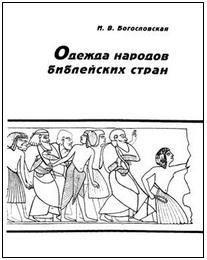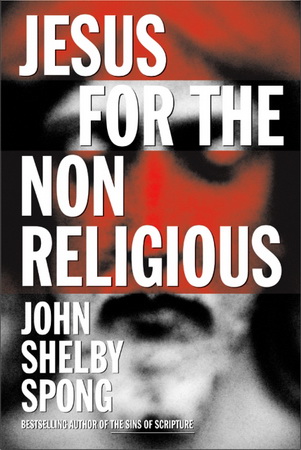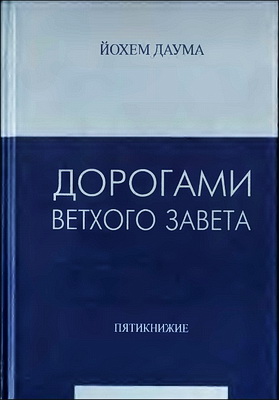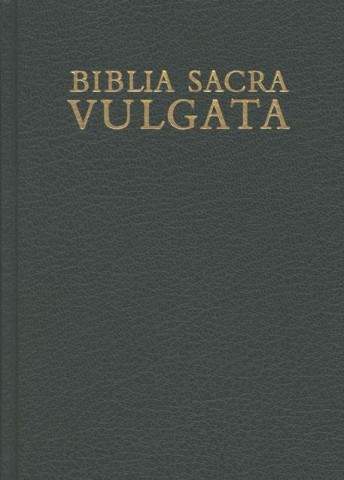
Spong - Jesus for the non religious

There is a sense in which I have been writing this book for my entire lifetime. Finally, in what is likely to be the last decade of my life, I have been able to bring together two powerful streams of thought that have been flowing separately inside me for almost as long as I can remember.
The first stream has been formed by my deep commitment to Jesus of Nazareth, who has always stood at the center of my faith tradition; the second has been created by my deep alienation from the traditional symbols and forms through which the meaning of this Jesus has been communicated through the ages. Together these two streams have produced a profound tension that has shaped both my personal and my professional life.
The Jesus who attracted me was always the Jewish Jesus—deeply real, intensely human, yet in touch with something that was both eternal and transcendent. For some decades I have been convinced that the secret to understanding this Jesus has to be found in the Jewish context that produced him, nurtured him and shaped him. Yet when I listened to the Jesus who was worshipped inside the Christian church, both his Jewishness and his humanity seemed to me to be either ignored or vigorously repudiated.
This profoundly Jewish Jesus first appeared in my writing in 1974, in a book entitled This Hebrew Lord. That book touched something deep and significant in me, and obviously it did in my audience as well: it has gone through three revisions, four new covers and countless reprintings, yet thirty-three years later, copies of it are still rolling off the presses every year.
HarperCollins now calls it “a classic,” which probably means they do not quite know what to do with it: it is too old to promote and it still sells too well to cancel! One year after the publication of This Hebrew Lord, that book became the catalyst for a dialogue in which I engaged Rabbi Jack Daniel Spiro, then the spiritual leader of Temple Beth Ahabah in Richmond, Virginia, but now the head of the Department of Judaic Studies at Virginia Commonwealth University.
These discussions would later be published under the title Dialogue in Search of Jewish- Christian Understanding. In that encounter my attraction to the Jewish Jesus was expanded to new levels of intensity. Still later, under the influence of a great New Testament professor, Michael Donald Goulder, of the University of Birmingham in the United Kingdom, I moved dramatically deeper into the Jewish roots of Christianity.
Out of that study, I published a book entitled Liberating the Gospels: Reading the Bible with Jewish Eyes, in which I sought to demonstrate that when the Christian church was formed it was a movement within the life of the synagogue, where it lived for the first fifty to sixty years of its life. Christianity separated itself from Judaism somewhere around the year 88 ce.
This means that of the four canonical gospels in the New Testament, two, Mark and Matthew, were written before that fracture occurred; Luke, which was probably penned after 88, was nonetheless so influenced by Mark that Mark’s pre-split framework is still operative in that third gospel. John was thus the only one clearly on the other side of that split, and so John reflects, quite obviously, both the separation and indeed some of its bitterness.
Given this close connection between Christianity and the synagogue, it was inevitable that when Jesus’ earliest followers tried to talk about their experience with him, they did so using the God language of their familiar Jewish background. In investigating this process we discover that it was Jesus’ humanity that inspired the talk of his divinity. The second stream flowing through both my professional life and my writing career was the recognition that the expanding knowledge of my secular world had increasingly rendered the traditional theological formulations expressed in such core Christian doctrines as the incarnation, the atonement and even the trinity inoperative at worst, and incapable of making much sense to the ears of twenty-first-century people at best.
Time after time I watched the church fight and lose rearguard defensive battles as it was forced to adjust its thinking to the waves of new discoveries that compromised what the church once called “revealed and unchanging truth.” That “truth” proved to be not only not revealed, but also not eternal! To compound the problem, I discovered that this expanded secular and scientific knowledge, which I saw eroding the formulas of my faith tradition, was actually aided by a second knowledge revolution arising from within Christianity itself. Over the last two hundred years, the Bible has become the subject of new and critical scholarship that has quite literally torn away the biblical support for most traditional Christian thinking. It has been Christian scholars whose study has led them to challenge creeds, relativize doctrines and dismiss dogmas.
At first this critical thinking was confined to the Christian academy, but it finally broke into public awareness in 1834 with the publication of a monumental book by David Friedrich Strauss entitled Leben Jesu, or in English The Life of Jesus, Critically Examined.2 This book raised publicly questions about the accuracy, the authenticity and the reliability of the crucial details in the gospel accounts of the life of Jesus. That was the opening shot in a battle that would ultimately infuriate the fundamentalists, in both their Catholic and Protestant forms, driving them to more and more hysterical claims for the infallibility of their teaching authority or the inerrancy of their sacred texts. At the same time this knowledge would totally demoralize the mainline traditions that no longer knew how to talk about either their God or their Jesus. No one today can realistically pretend that this biblical revolution is not real.
John Shelby Spong - Jesus for the non-religious
Publishing — HarperCollins e-books — 2007 y.
ISBN 978-0-06-128800-5
John Shelby Spong - Jesus for the non-religious - Contents
- Preface
- Prologue: The Lament of a Believer in Exile
Part 1. Separating the Human Jesus from the Myth
- Introduction: Opening the Door on a New Quest
- There Was No Star Over Bethlehem
- The Parents of Jesus: Fictionalized Composites
- The Historicity of the Twelve Disciples
- Miracle Stories in the Gospels: Are They Necessary?
- Nature Miracles: Interpretive Signs, Not Historical Events
- Healing Miracles: A Vision of the Kingdom of God
- Did Jesus Literally Raise the Dead?
- The Crucifixion Narrative: Liturgy Masquerading as History
- The Cross: Told “In Accordance with the Scriptures”
- The Eternal Truth Inside the Myths of Resurrection and Ascension
Part 2. The Original Images of Jesus
- Introduction: Exploring the Original Images of Jesus
- The Oral Tradition: Where Was Jesus Remembered?
- Jesus Understood as the New Passover
- Jesus Understood Under the Symbols of Yom Kippur
- Jesus as the Son of Man
- Minority Images: The Servant, the Shepherd
- Jesus: A Man for All Jewish Seasons
Part 3. Jesus for the non-religious
- Introduction: Jesus Really Lived
- Who Is the God Met in Jesus?
- Recognizing the Sources of Religious Anger
- Jesus: The Breaker of Tribal Boundaries
- Jesus: The Breaker of Prejudices and Stereotypes
- Jesus: The Breaker of Religious Boundaries
- The Cross: A Human Portrait of the Love of God
- Epilogue: Christpower
- Notes
- Bibliography
- Index
John Shelby Spong - Jesus for the non-religious - There Was No Star Over Bethlehem
We start our probe into the Jesus story at the beginning of the Bible’s description of his life. Was Jesus born in Bethlehem, the city of David? The answer is a very simple no. There is almost no possibility that this claim is a fact of history. Jesus’ place of birth was quite probably in Nazareth. He was, in all likelihood, born in exactly the same way that every other person is born. He had a human mother and a human father. Both the Bethlehem birthplace and the virgin birth tradition are aspects of a developing interpretive process that did not begin to manifest itself inside the Christian written tradition until well into the ninth decade, or some fifty to sixty years after the earthly life of Jesus had come to an end. Traditional believers, most of whom have learned what they know about Jesus’ birth from Christmas pageants in which they were actors and actresses and not from the Bible itself, will find this first probe into the birth myth to be immediately disturbing.
Romantic, nostalgic, unchallenged tales die hard. Birth stories are always fanciful. They are never historical. After all, no one waits outside a maternity ward for a great person to be born. An individual has first to become great; then tales presaging that future greatness begin to circulate around his or her origins. Tales are developed that hint of the presence of peculiar gifts of strength, character or intelligence in the heroic person at a very young age. In time the moment of that person’s birth might well begin to be marked with magical signs and portents of things to come. It is, therefore, essential to begin this search for the reality of the man Jesus by looking at the biblical narratives that purport to tell of his birth, which for far too long have been mistakenly read as history. These stories are filled with unusual details.
They tell us of singing angels, stars that announce earthly happenings and even a fetus leaping to proclaim the anticipated power of another fetus. These details should quickly be recognized for what they are: interpretive symbols, not literal history. Listen first to some pertinent facts that do come from the realm of history: According to secular records, King Herod the Great appears to have died in the year 4 bce, after which the land of the Jews was divided into three procuratorships. In time Pontius Pilate became the Roman Empire’s procurator for Judea, one of those three areas. Pilate, according to secular records, held that position between the years 26 ce and 36 ce. If the tradition is accurate that Jesus was born when Herod was king, a detail attested in two gospel narratives (Matt. 2:1, 22, Luke 1:5), and if his crucifixion took place during the reign of Pontius Pilate, as all of the gospels assert (Mark 15:1, Matt. 27:2, Luke 3:1, 23:1, John 18:29ff.), then we can get a fairly accurate fix on the actual time dimensions of his life.
By squeezing those numbers with the use of other known data, a consensus among scholars has emerged suggesting that the life span of Jesus of Nazareth began around the year 4 bce and ended in the crucifixion somewhere around the year 30 ce. With those dates fairly firmly set, we are ready to focus on the specifics of his life. Where was Jesus born? Since he was widely known as Jesus of Nazareth (Mark 1:24, 6:1-6, 16:6, Matt. 21:11, 26:71, Luke 4:16, 18:37, 24:19, John 1:45, 18:5), the probability is that Nazareth was his place of origin. That is certainly the assumption made by the author of the book we call Mark, the earliest gospel to be written. In Mark’s narrative there is not only no reference to Bethlehem, but also no hint of a miraculous birth.
This means that the account of a Bethlehem birthplace for Jesus did not enter the Christian tradition until Matthew wrote his gospel sometime in the eighties of this Common Era. When the Bethlehem tradition does appear, it seems to have been driven not by some firsthand memory, but solely by the use of a messianic text found in the book of the prophet Micah (Mic. 5:2), a late-eighth- century-BCE work. Matthew, in his story of Herod responding to a query from the magi, says that the king directed his scribes to determine where the “promised one” would be born. Those scribes searched the scriptures and interpreted the words of Micah as a hidden messianic clue (Matt. 2:5-6). Why would Micah write that the messiah would be born in the village of Bethlehem, just a few miles from Jerusalem?
Because this city was the birthplace of the great King David and Jewish expectations had long ago added the restoration of the throne of David to their developing messianic tradition. Matthew and Luke, the only gospel writers to give us a birth tradition or indeed any information about Jesus’ family of origin, lend support to the shakiness of Bethlehem being the birthplace by disagreeing on how it was that Jesus happened to be born there. Indeed, the two accounts vary in many places. In the common mind, however, they are blended: most people cannot separate Matthew’s details from Luke’s. It is essential for our purposes to make the two stories distinct. Matthew assumes that Mary and Joseph live in Bethlehem. That, of course, makes it easy to say that Jesus’ birth occurred there.
Mary and Joseph, according to Matthew, lived in a quite specific and identifiable house in Bethlehem over which, he would say, a star could pause and on which it could pour its steady and illuminating light. Yet Matthew also clearly knows the historical fact that Jesus was a Galilean, and he shares the general assumption of those who knew Jesus as an adult that he hailed from the village of Nazareth. In that day there was virtually no migration from Jerusalem and Judea toward Galilee. No one desired to move out into the country or even the suburbs. All the factors present in the life of the Jews, whether they were social, political or economic, favored migration, if at all, toward Jerusalem, not away from it. Jerusalem represented opportunity, while Galilee represented poverty.
Even Roman oppression was tempered by the political weight of the city. Yet that is the direction Matthew has the family of Jesus move so that he can account for Jesus’ Galilean background. To explain this counterintuitive behavior, he had to develop in his infancy narrative a rather forced drama to explain what it was that motivated the family of Jesus to leave his noble Judean place of birth in Bethlehem in order to grow up in rural and rustic Galilee.




Комментарии
Пока нет комментариев. Будьте первым!